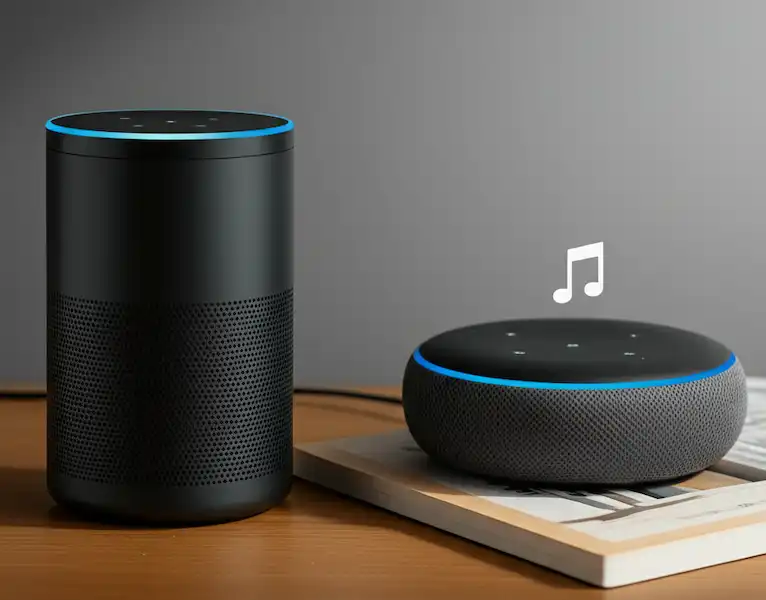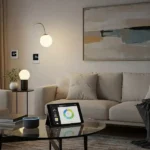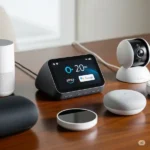Smart Speakers: Your Voice-Activated Home Assistant
Smart speaker devices have rapidly become a staple in modern homes, offering a hands-free way to interact with technology and streamline daily tasks. But what exactly are they, and why have they become so popular? Having personally set up, used, and extensively tested various smart speakers over the past few years, I’ve experienced firsthand their evolving capabilities and how they integrate into daily life. This article will delve into the world of smart speakers, exploring their usefulness, comparing popular models based on my hands-on evaluation, outlining their pros and cons, offering practical tips for effective use learned through real-world scenarios, and more.
What are Smart Speaker Devices?
A smart speaker is a voice-activated device that uses a virtual assistant (like Amazon Alexa, Google Assistant, or Apple’s Siri) to perform a variety of tasks based on your voice commands. These devices typically connect to your home Wi-Fi network and can control smart home devices, play music, answer questions, set reminders, make calls, and much more.
The Utility of Smart Speaker Devices
Smart speakers offer a wide range of functionalities that can enhance your daily life:
- Hands-free Convenience: Control music, set timers, add items to shopping lists, and get information without needing to touch a device.
- Information at Your Fingertips: Ask about the weather, news, sports scores, or general knowledge and receive instant audio responses.
- Smart Home Control: Manage compatible smart home devices like lights, thermostats, locks, and cameras with simple voice commands.
- Entertainment Hub: Stream music, podcasts, and audiobooks from various services.
- Personal Organization: Set reminders, schedule appointments, create to-do lists, and manage your calendar.
- Communication: Make and receive phone calls or send voice messages (depending on the device and service).
Smart Speaker Devices – Feature Comparison Chart
| Feature | Amazon Echo (4th Gen) | Google Nest Audio | Apple HomePod mini |
|---|---|---|---|
| Virtual Assistant | Alexa | Google Assistant | Siri |
| Audio Quality | Good | Good | Good |
| Smart Home Hub | Zigbee, Bluetooth | Thread (ready) | Thread (ready) |
| Multi-room Audio | Yes | Yes | Yes (AirPlay 2) |
| Voice Calling | Yes | Yes | Yes |
| Intercom Feature | Yes (Drop In) | Yes (Broadcast) | Yes (Intercom) |
| Privacy Features | Microphone off button | Microphone off switch | Microphone off button |
| Price (approx.) | $$ | $$ | $$ |
Price range is a general indication: $ = Lower, =Mid−range,$ = Higher
Pros and Cons of Various Smart Speaker Devices
Based on my extensive use and observations:
Amazon Echo:
- Pros: Wide range of devices and prices, vast Alexa skill ecosystem, strong smart home integration, good audio quality for the price.
- Cons: Privacy concerns due to data collection, Alexa can sometimes misinterpret commands.
Google Nest Audio:
- Pros: Excellent Google Assistant integration, strong search capabilities, good audio quality, seamless integration with other Google services.
- Cons: Smaller ecosystem compared to Alexa, some privacy concerns related to Google’s data collection.
Apple HomePod mini:
- Pros: Seamless integration with Apple devices and services, strong privacy features, good audio quality for its size, excellent intercom system.
- Cons: Limited compatibility with non-Apple devices, smaller skill ecosystem compared to Alexa and Google Assistant.
Deep Dive into Smart Speaker Devices
Beyond the basic functionalities, smart speakers are constantly evolving. From my technical understanding and observing industry trends, many now include features like:
- Improved Audio Quality: Higher-end models offer premium sound for music enthusiasts.
- Built-in Displays: Smart displays add visual information, allowing for video calls, displaying weather forecasts, and controlling smart home devices with touch.
- Environmental Sensors: Some devices can monitor temperature and humidity in your home.
- AI-powered Personalization: Virtual assistants are becoming better at understanding context and personalizing responses.
- Integration with Other Services: Smart speakers can now connect with a wider range of third-party apps and services.
Tips for Using Smart Speaker Devices Effectively (Based on My Practical Experience)
- Choose the Right Location: Place your smart speaker in a central location where it can easily hear your commands. Avoid areas with excessive background noise.
- Speak Clearly and Naturally: Enunciate your commands clearly and speak at a natural pace.
- Learn Key Commands: Familiarize yourself with the specific commands for your virtual assistant.
- Customize Your Settings: Explore the settings of your smart speaker app to personalize your experience, manage privacy settings, and connect to your preferred services.
- Utilize Routines and Skills/Actions: Create custom routines to automate multiple tasks with a single command. Explore the skills or actions available for your virtual assistant to expand its capabilities.
- Be Mindful of Privacy: Review the privacy settings of your device and understand how your voice data is being used. Utilize microphone mute buttons when needed.
Troubleshooting Common Smart Speaker Devices Problems
Smart speakers, while incredibly convenient, can sometimes run into issues. From frustrating connectivity problems to a seemingly deaf assistant, troubleshooting these devices can seem daunting. Here’s a guide to common smart speaker problems and how to fix them.
When your smart speaker isn’t behaving as expected, a systematic approach to troubleshooting can often resolve the issue quickly.
1. The Device is Unresponsive or Not Hearing Commands
This is perhaps the most common and frustrating issue.
- Check the Microphone: Most smart speakers have a physical button or switch to mute the microphone for privacy. Ensure it’s not accidentally muted. The device’s lights often change color to indicate the microphone status (e.g., red for muted).
- Power Cycle the Device: Unplug the smart speaker from its power source, wait for 10-30 seconds, and then plug it back in. This simple reboot can resolve temporary glitches and refresh its connection.
- Speak Clearly and Closer: Ensure you’re speaking clearly and directly to the speaker. Background noise can interfere with voice recognition. Try moving closer to the device or reducing ambient sound.
- Rephrase Commands: Sometimes the virtual assistant might misinterpret a command. Try rephrasing your request using different words.
- Check for Obstructions: Make sure the speaker’s microphones aren’t blocked by dust, debris, or nearby objects.
- Wi-Fi Connection (See next section): A poor or lost Wi-Fi connection is a primary culprit for unresponsiveness, as the device needs internet access to process commands.
2. Wi-Fi Connectivity Issues
Smart speakers rely heavily on a stable Wi-Fi connection.
- Check Your Wi-Fi Network:
- Is your Wi-Fi working? Try connecting another device (phone, laptop) to your Wi-Fi to confirm your internet connection is active.
- Router Reboot: Unplug your Wi-Fi router and modem for about 60 seconds, then plug them back in. Wait for them to fully restart and establish a connection.
- Router Placement: Your smart speaker should be within a reasonable range of your Wi-Fi router. Walls, floors, and other electronic devices can interfere with the signal. Try moving the speaker closer to the router.
- 2.4GHz vs. 5GHz: Most smart speakers work best on the 2.4GHz Wi-Fi band, which offers better range. While some support 5GHz (faster, but shorter range), ensure your speaker isn’t struggling on a weaker 5GHz signal if your router broadcasts both. You might need to check your router settings or app to see which band your speaker is connected to.
- Network Congestion: Too many devices on your Wi-Fi network can slow it down. Consider disconnecting devices you’re not actively using.
- Re-add the Device to Wi-Fi: Open the smart speaker’s companion app (Alexa app, Google Home app, Apple Home app) and go through the steps to reconnect or set up the device’s Wi-Fi connection again. You might need to “forget” the network first.
- Check for Router Updates: Ensure your router’s firmware is up to date, as updates can improve stability and compatibility.
3. No Sound or Poor Sound Quality
If your speaker isn’t playing audio or the sound is distorted:
- Check Volume Levels: First, ensure the volume isn’t turned down on the speaker itself or within the companion app.
- Check Mute Status: Confirm the speaker isn’t muted within the app or by any physical button.
- Source Issues: If playing music, check if the streaming service is working correctly on other devices. Try playing music from a different source (e.g., a different streaming service or Bluetooth if available).
- Bluetooth Connections: If using Bluetooth, ensure the speaker is properly paired and connected to the correct device. Disconnect and re-pair if necessary.
- Physical Damage/Connections: Inspect the power cable and any other connections for damage or loose fittings.
- Restart the Device: A simple power cycle can often fix temporary audio glitches.
- Firmware Updates: Ensure your smart speaker’s firmware is up to date, as updates often include audio improvements and bug fixes.
4. Smart Home Devices Not Responding
If your smart speaker can hear you but can’t control your smart lights, thermostat, etc.:
- Check Device Power and Connectivity: Ensure the smart home device itself (light bulb, switch, etc.) is powered on and connected to its respective network (Wi-Fi, Zigbee, Z-Wave).
- Check Smart Home Hub/Bridge: If your smart home setup uses a hub (e.g., Philips Hue Bridge, SmartThings Hub), ensure it’s powered on and connected to your network.
- Relink Skills/Services: In the smart speaker’s companion app, try disabling and re-enabling the “skill” or “service” for the problematic smart home brand. You may need to relink your accounts.
- Rename Devices: If you recently changed the name of a smart home device, update its name in both the smart home app and the smart speaker app to ensure consistency.
- Test Individual Devices: Try controlling the smart home device directly from its own app to rule out issues with the device itself.
5. Other General Troubleshooting Steps
- Check for Firmware Updates: Always ensure your smart speaker is running the latest software. Updates often include bug fixes and performance improvements. You can usually check for and initiate updates through the companion app.
- Factory Reset (Last Resort): If all else fails, a factory reset can return your smart speaker to its original settings, often resolving deep-seated software issues. Be aware that this will erase all your personalized settings, connected accounts, and Wi-Fi information, and you’ll need to set up the device again from scratch. Consult your device’s manual or online support for specific factory reset instructions.
- Contact Manufacturer Support: If you’ve exhausted all troubleshooting options, reach out to the customer support for your specific smart speaker brand (Amazon, Google, Apple, etc.). They can offer more tailored advice or arrange for repair/replacement if necessary.
By following these troubleshooting steps, you can often diagnose and resolve common smart speaker devices problems, getting your voice-activated assistant back to full functionality.
Additional helpful information
Some details about setting up a Home Assistant – Home Assistant Devices: Your Ultimate Local Smart Home Hub
Here is some information about setting up a smart display device – Smart Display Devices: Your Visual Hub for a Smarthome




